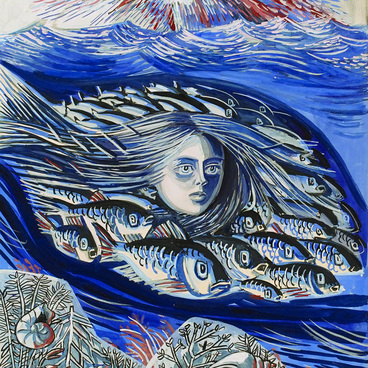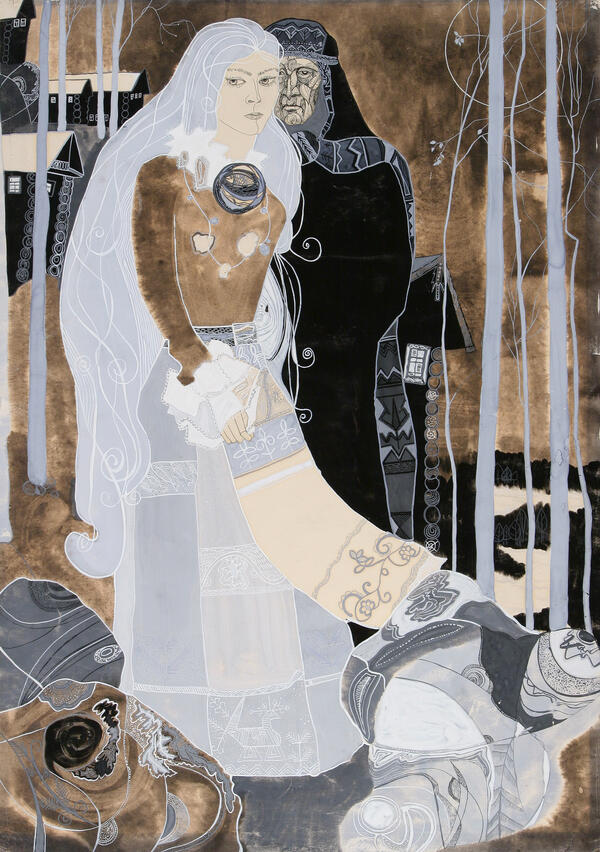Tamara Grigoryevna Yufa was a renowned graphic artist, book illustrator, and set designer. She received the State Award of the Karelian Autonomous Soviet Socialist Republic. Yufa was born in the village of Kolodeznaya in the Lipetsk region in 1937. She graduated from the Leningrad Art and Pedagogical College. In 1960, she relocated to Karelia.
Yufa began working on the “Kalevala” in 1962. She created a series of graphic works inspired by the epic poem. Her illustrations appeared in several editions of “Kalevala”: “Selected Runes, ” published in Petrozavodsk in 1967 and 1971, and “Runes Selected by Otto Kuusinen, ” also published in Petrozavodsk in 1970 and 1973.
In addition to her work on the “Kalevala, ” Yufa designed costumes for the national vocal ensemble, “Kantele”, and the folk ensemble of singers and dancers “Runa”. Furthermore, she contributed to the set design of the play “Kanteletar” for the State Finnish Drama Theater.
The images created by Tamara Yufa, a St. Petersburg-based artist, are original and highly individual. As a student, she was fascinated by the runes of “Kalevala”, and after graduating, she moved to Karelia to further pursue her career. There, she produced a plethora of works. She is most renowned for her portrayals of the female characters such as Aino, Mariatta, the sorceress Louhi, and her daughter.
The name “Aino” (“the only one” in Finnish) was coined by Elias Lönnrot. This is a generalized image of a young woman based on folklore. Lönnrot chose two completely different narratives, drawing inspiration from the runes that he collected and wrote down: one is about a young girl who commits suicide because she is forced to marry a man she does not love; another one is a song about a magical fish that can transform into a maiden when touched by a valiant hero.
Combining these two narratives, Lönnrot makes Aino
the sister of Youkahainen, who is defeated in a singing contest by the old man
Wainamoinen. Rather than marrying an elderly man, Aino, in sorrow, goes to a
lake, falls into the water, and transforms into a fish. Wainamoinen later
captures this fish, but fails to recognize Aino in it, so the young woman will
forever remain a free fish. In constructing Aino’s destiny, Lönnrot substitutes
the motif of suicide with that of an accident: rather than deliberately
drowning herself, Aino accidentally falls into the water and perishes. The epic
“Kalevala” was composed in the 19thcentury. In creating a pure and
innocent image of a young woman, its compiler sought to avoid including such a
reprehensible act as suicide into Aino’s story.






